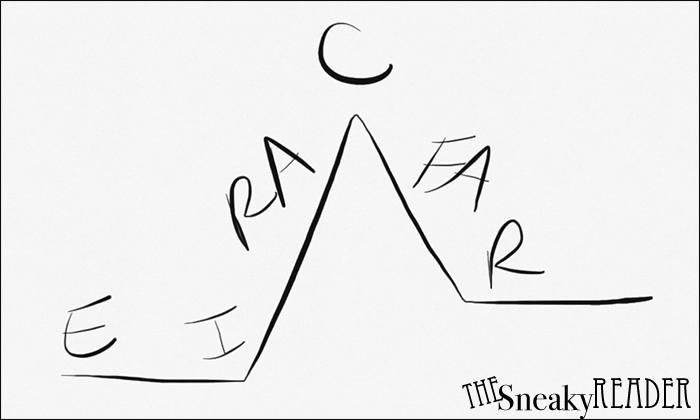Don't get me wrong-- I think worksheets are generally overdone, and the sometimes trivial mental work that is required by a poorly constructed worksheet gives the whole format a bad name. Worksheets are great as long as they're well constructed. My students probably have enough paper in their binders to construct another ark by the time they finish my class. But sometimes, you just need to break away from the worksheet wagon and get them out of their seats, collaborating, and creating. This is where a the living conflict pyramid comes in!
Lesson Objectives:
- Identify the main conflict of a story
- Analyze and chart the development of the main conflict
- Visualize pivotal scenes in the story
- Create a plot pyramid a la Freytag
- Collaborate and negotiate
- Present their findings orally and defend them
Materials:
For this activity, you will need:
- White boards
- Dry-erase markers
If you don't have those, you could easily substitute construction or regular paper and markers!
Core standards:
CC.1.3.11–12.E: Evaluate the structure of texts, including how specific sentences, paragraphs, and larger portions of the texts relate to each other and the whole.
Background Knowledge:
We teach our students to analyze plot structure by understanding the CONFLICT. We teach Freytag's pyramid like so:
Each letter represents a certain point in the conflict:
- Exposition - Background information leading up to the conflict
- Inciting Incident - Technically, this one isn't in our curriculum, but it always helps my students to understand the plot better. This is the moment or event that ignites the conflict
- Rising Action - Events that develop or worsen the conflict
- Climax - Point of greatest uncertainty, when we are unsure how the conflict will resolve
- Falling Action - Events that start to show us how the conflict will resolve
- Resolution - The conflict ends or resolves (or does it?)
Procedures:
The first step is for students to get into a group of about 5 or 6. In their groups, they must accomplish the following:- Determine the main conflict of the story (in Fahrenheit 451, it could be Montag's rebellion against conformity)
- Decide which 5 or 6 scenes are the most important to developing that conflict
- Draw each of these scenes on a white board, paying attention to the characters and how they are portrayed in relation to each other
- Decide how to arrange their boards in terms of the conflict-- the higher the board, the greater the sense of conflict
- Identify the points of the plot pyramid associated with each scene and prepare to explain and defend each one
Give the students about ten minutes to prepare. Then, they should go to the front of the room and stand in their living pyramid with their white boards held up in varying degrees of conflict (the higher the board, the stronger the conflict). They should explain and defend their positions and allow their classmates to ask them questions and challenge their interpretation.
Your students will just think they're having fun drawing on white boards, but really, they're doing a great deal of higher-order negotiating, prioritizing, and analyzing in order to create this living plot pyramid. Happy plotting!



No comments:
Post a Comment